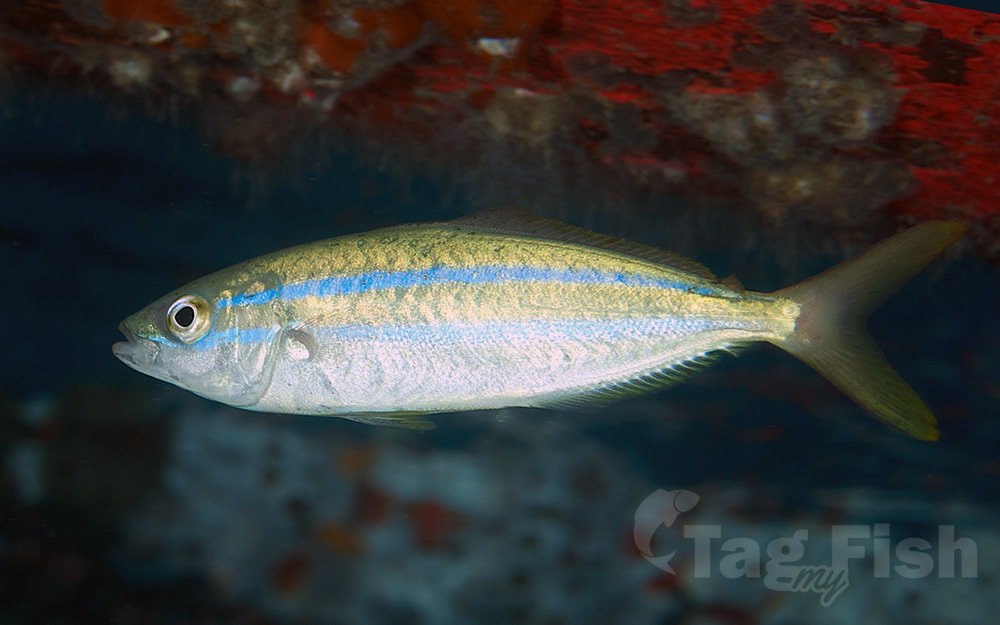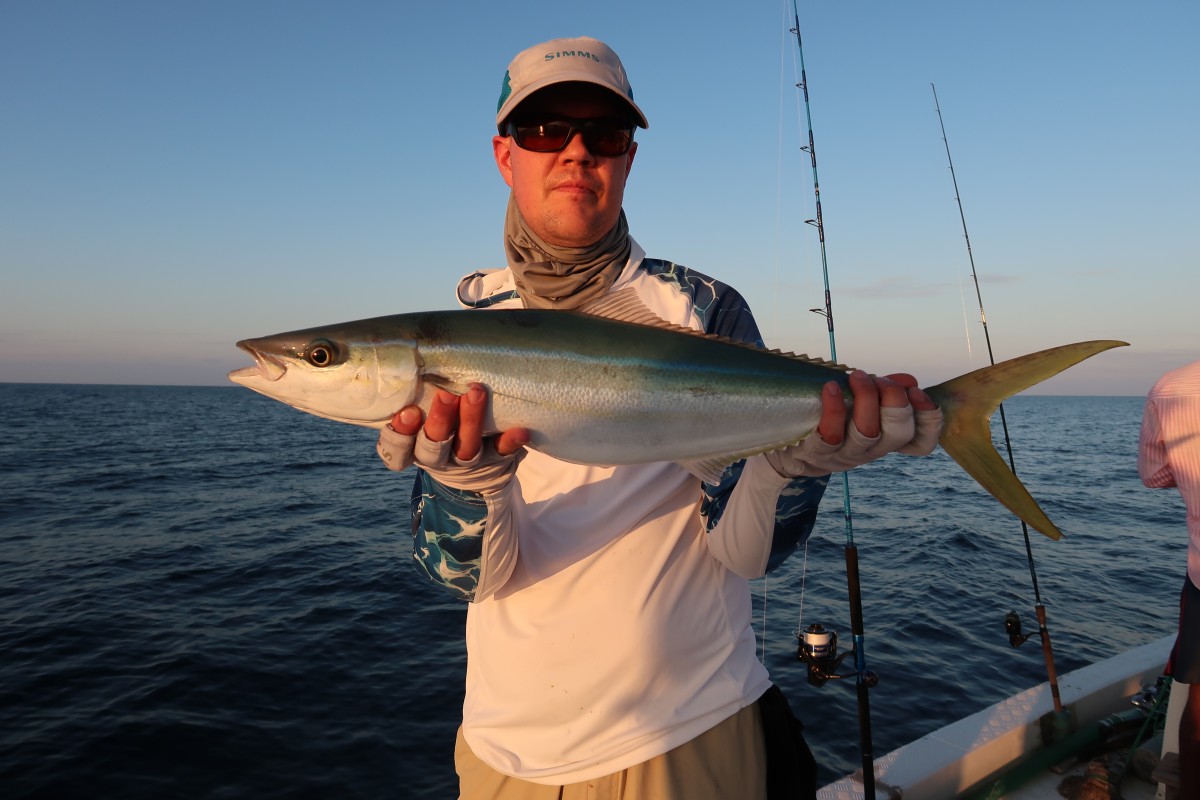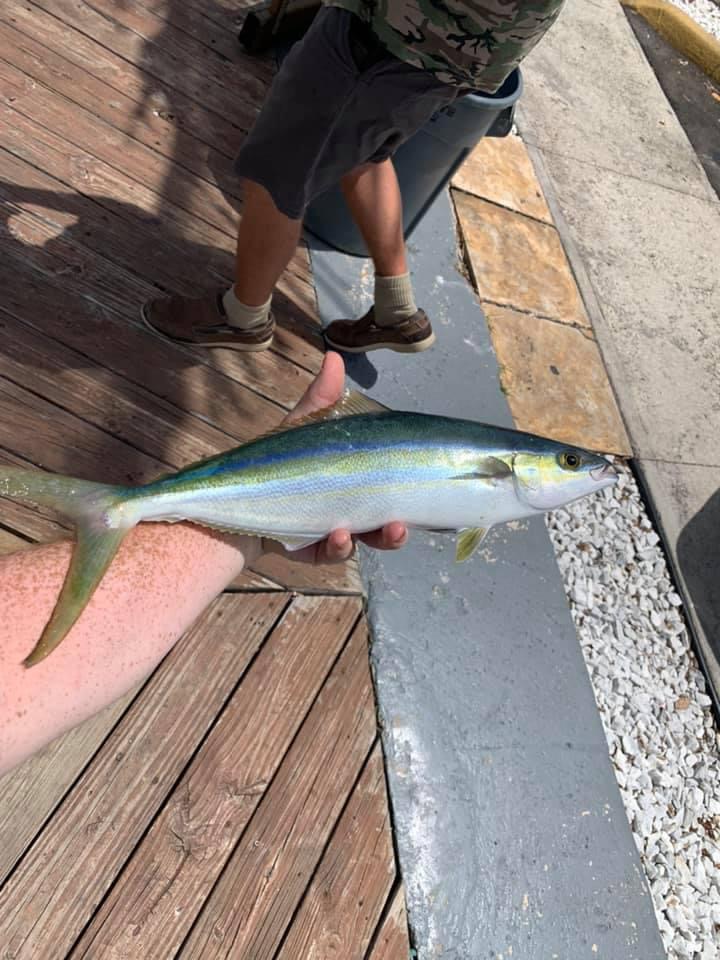Rainbow runner
(Elagatis bipinnulata)

Classification
General data
The rainbow runner (Elagatis bipinnulata), also known as the rainbow yellowtail, Spanish jack and Hawaiian salmon, is a common species of pelagic marine fish of the jack family, Carangidae.
The species is widespread throughout the tropical and subtropical waters of the world, inhabiting both coastal and offshore areas. The species is the only member of the genus Elagatis, which was created 15 years after its initial description, and is closely related to the amberjacks.
The rainbow runner is easily distinguished by its body shape, and the brilliant colouration which gives the fish its name. It is a fast-swimming predator, taking small fish, cephalopods, and a wide variety of planktonic crustaceans.
The species reaches sexual maturity around 60 cm (24 in), and spawning takes place at different times, with some populations spawning year round, while others only spawn at certain times of the year.
The species is a well known game fish, taken by a variety of fishing methods, and is a well-regarded table fish. Large numbers of the species are taken as bycatch in tuna- and shark-fishing operations and marketed.
Body is atypical of the jack family, which generally have deep, compressed bodies. The rainbow runner has a subcylindrical, elongated to almost fusiform body, with a long, pointed head and snout and a tapering rear end before the caudal fin emerges. The eyes are relatively small and the teeth are arranged on jaws in villiform bands, with minute teeth also present on the roof of the mouth and tongue.
The fish has two dorsal fins, although the posterior rays of the long second fin have separated into a finlet. The first dorsal consists of six spines, the second of a single spine and 25 to 30 soft rays, with the last two as a separate finlet. About 4% of rainbow runners have only five spines in the first dorsal fin, and are apparently born without them. The anal fin consists of one spine detached from the fin anteriorally, while the main fin has a single spine and 18 to 22 soft rays, with the last two detached to form a finlet like the dorsal fin. The dorsal and anal fins are quite low, and the dorsal fin is much longer than the anal. The pectoral fin is small for a carangid, about the length of the pelvic fin and is not falcate, with 20 rays. The pelvic fin consists of one spine and five branched soft rays. The caudal fin is also highly diagnostic, being deeply forked and consisting of 17 caudal rays, 9 dorsally and 8 ventrally.
The lateral line has a slight anterior arch and no scutes are present on the line, but possesses about 100 scales. The scales covering the body and parts of the operculum, cheek, pectoral fins, pelvic fins, and caudal fins are ctenoid in shape. The species has 24 vertebrae.
The colour of the fish is possibly the easiest way to identify the rainbow runner. The upper body is a dark olive blue to green and fades to white underneath. Two narrow, light blue to bluish white stripes run longitudinally along the sides, with a broader olive to yellow stripe between them.
The maximum length of the species is somewhat contentious, with most sources giving a known maximum length between 107 and 120 cm (42 and 47 in) cm, while one source asserts the species reaches 180 cm (71 in) in length
The maximum known weight is confidently known to be 46.2 kg, as recorded by the International Game Fish Association.














